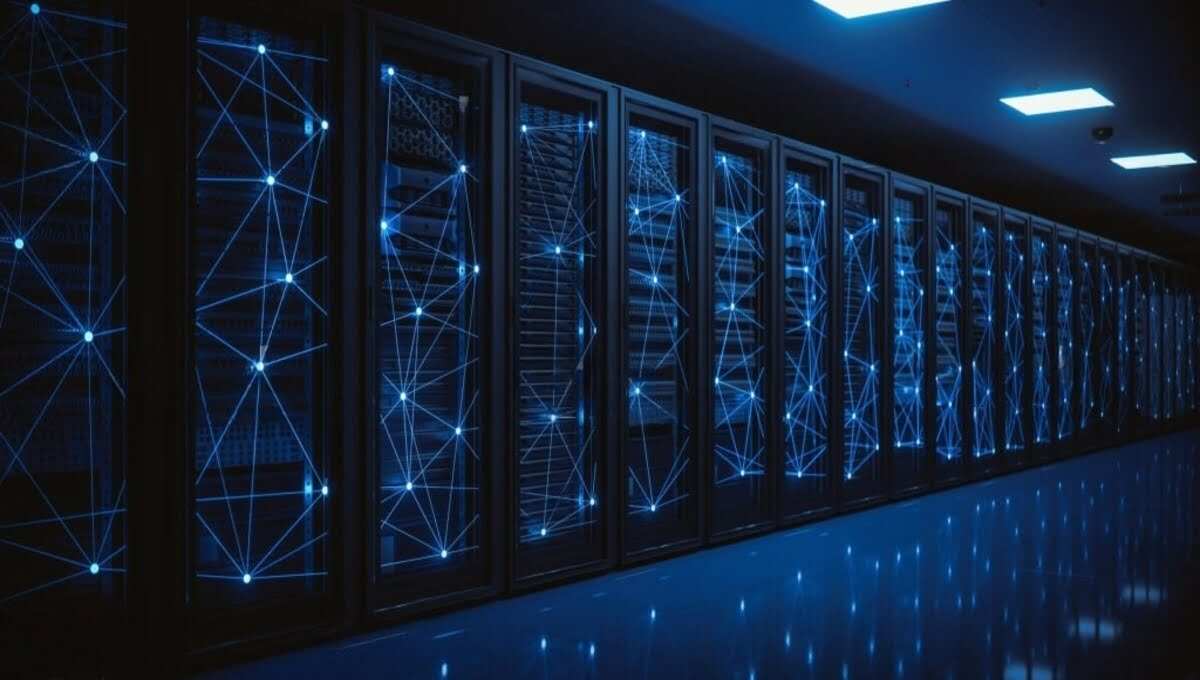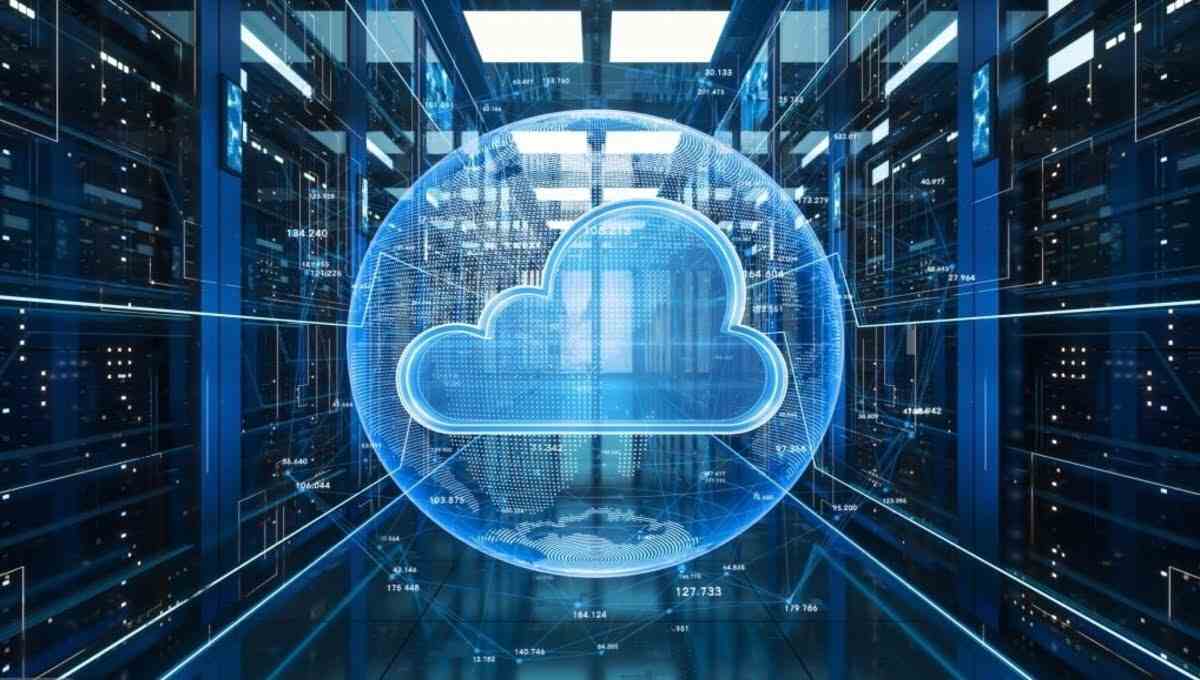CLOUD COMPUTING
What is cloud computing data center?

The phrase “cloud computing data center” has become widely used in the modern, fast-paced digital environment. These data centers are rapidly being used by companies, groups, and individuals to store, manage, and access their data. The world of cloud computing data centers will be explored in this article, along with its concepts, advantages, and how it is influencing information technology in the future.
Introduction
In the realm of modern technology, cloud computing has revolutionized the way data is stored, processed, and accessed. Central to this innovation are cloud computing data centers, which serve as the backbone of the cloud infrastructure.
Understanding Cloud Computing
Defining Cloud Computing
The supply of computing services, such as storage, processing power, and applications, through the internet is referred to as cloud computing. By doing away with local servers and physical hardware, it allows users to access resources whenever they need them.
Essential Characteristics of Cloud Computing
Cloud computing exhibits five key characteristics: on-demand self-service, broad network access, resource pooling, rapid elasticity, and measured service. These features contribute to the flexibility and efficiency of cloud data centers.
Service Models: IaaS, PaaS, and SaaS
Cloud services are categorized into three categories: infrastructure as a service (IaaS), platform as a service (PaaS), and software as a service (SaaS). Each offers a different level of control and management over the underlying infrastructure.
Deployment Models: Public, Private, and Hybrid Clouds
Cloud deployment models include public, private, and hybrid clouds. Public clouds are shared among multiple users, private clouds are dedicated to a single organization, and hybrid clouds combine elements of both.
The Role of Data Centers
Traditional Data Centers vs. Cloud Data Centers
Traditional data centers relied on physical servers and networking equipment to store and manage data. Cloud data centers, on the other hand, abstract the hardware layer, enabling virtualization and efficient resource allocation.
Evolution of Data Centers
Data centers have evolved from basic server rooms to complex facilities with high computational power and advanced cooling systems. Cloud data centers take this evolution further by optimizing resource utilization and minimizing downtime.
Cloud Computing Data Centers Explained
What are cloud data centers?
Cloud data centers are geographically distributed facilities that host virtualized resources and applications. They consist of clusters of servers, storage arrays, and networking components working in harmony to provide seamless cloud services.
Components of Cloud Data Centers
A typical cloud data center comprises the following components:
- Servers are high-performance machines that run virtual instances.
- Storage: devices for data storage and retrieval.
- Networking Infrastructure: Equipment that connects servers and users
- Cooling and Power Systems: Mechanisms to maintain Ideal operating conditions
Benefits of Cloud Computing Data Centers
Scalability and Flexibility
Cloud data centers offer unmatched scalability, allowing users to scale resources up or down based on demand. This elasticity ensures efficient resource utilization and cost savings.
Cost Efficiency
By eliminating the need for upfront hardware investment and offering pay-as-you-go pricing models, cloud data centers provide significant cost advantages.
Reliability and Redundancy
Cloud data centers implement redundancy and failover mechanisms to ensure high availability of services, minimizing downtime and data loss.
Working of Cloud Computing Data Centers
Virtualization
Virtualization technology enables the creation of virtual machines (VMs) on a single physical server. This optimizes resource usage and enhances the flexibility of cloud data centers.
Resource Allocation and Management
Cloud data centers use orchestration tools to manage resources effectively. Automated provisioning and load balancing ensure optimal performance.
Data Security and Privacy
Robust security measures, such as encryption and access controls, are implemented to safeguard data in cloud data centers.
Challenges and Concerns
Security Risks and Mitigation
Cloud data centers face security challenges like data breaches and unauthorized access. Encryption, security protocols, and regular audits help mitigate these risks.
Data Sovereignty and Compliance
Data sovereignty concerns arise due to varying data protection laws across jurisdictions. Cloud providers adhere to compliance standards to address these issues.
Sustainable and Green Data Centers
Future data centers are expected to focus on sustainability, utilizing energy-efficient technologies and renewable energy sources.
Impact on Various Industries
- Healthcare: Cloud data centers facilitate secure sharing of patient records and medical imaging, enabling timely and accurate diagnoses.
- Finance: Cloud data centers facilitate secure sharing of patient records and medical imaging, enabling timely and accurate diagnoses.
- Education: Cloud data centers support online learning platforms, making education accessible globally and providing interactive and multimedia-rich content.
Conclusion
In the digital era, cloud computing data centers have transformed the way businesses and individuals utilize and manage data. Their scalability, cost efficiency, and reliability make them pivotal in driving innovation across various sectors.
FAQs (Frequently Asked Questions)
Is a cloud computing data center the same as a traditional data center?
No, cloud data centers differ from traditional data centers as they leverage virtualization and offer scalable, on-demand resources.
What are the benefits of using cloud data centers for businesses?
Cloud data centers offer benefits such as cost savings, scalability, and high availability, which are advantageous for businesses of all sizes.
How do cloud data centers ensure data security?
Cloud data centers implement encryption, access controls, and security protocols to protect data from unauthorized access and breaches.
What role does virtualization play in cloud data centers?
With virtualization, many virtual machines can run on a single physical server, maximizing flexibility and resource usage.
What does the integration of edge computing mean for cloud data centers?
Edge computing integration brings data processing closer to the data source, reducing latency and enabling faster real-time processing.

 FUNDAMENTAL2 months ago
FUNDAMENTAL2 months agoHow Cloud Computing Improving Customer Service Processes

 FUNDAMENTAL7 months ago
FUNDAMENTAL7 months agoWhat is cloud computing? A Comprehensive Guide

 FUNDAMENTAL4 months ago
FUNDAMENTAL4 months agoHow can Cloud Technology Help Small Businesses ?

 FUNDAMENTAL7 months ago
FUNDAMENTAL7 months agoEvolution of Cloud Computing : A Well-Explained

 CLOUD COMPUTING2 months ago
CLOUD COMPUTING2 months agoWhat Is VlAN and VSAN In Cloud Computing?

 FUNDAMENTAL2 months ago
FUNDAMENTAL2 months agoIaaS PaaS and SaaS in cloud computing

 FUNDAMENTAL2 months ago
FUNDAMENTAL2 months agoWhich is a fundamental attribute of cloud computing?

 CLOUD COMPUTING2 months ago
CLOUD COMPUTING2 months agoHow to Make Your Own Cloud Storage : A Step-by-Step Guide










Hairstyles Color
1 September 2023 at 22:08
I just could not depart your web site prior to suggesting that I actually enjoyed the standard info a person provide for your visitors? Is going to be back often to check up on new posts
faad
3 September 2023 at 14:23
sir thankyou so much for giving us amazing feedback, Keep visiting and share it with your friends as well from (Author)
hermes handbags
2 November 2023 at 14:32
you’ve gotten an incredible blog here! would you like to make some invite posts on my weblog?
Real Estate Pune
14 November 2023 at 17:25
Nice post. I learn something totally new and challenging on websites